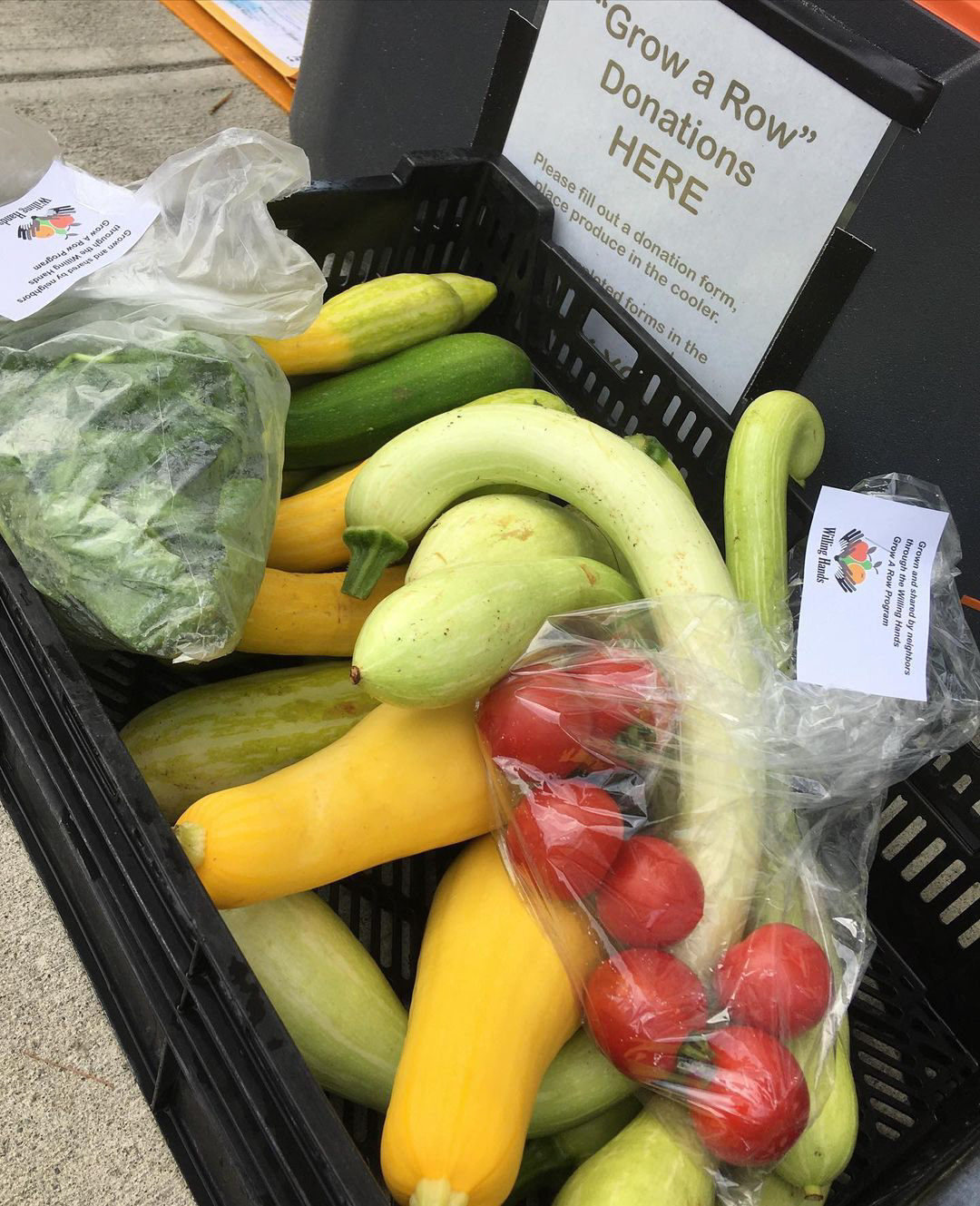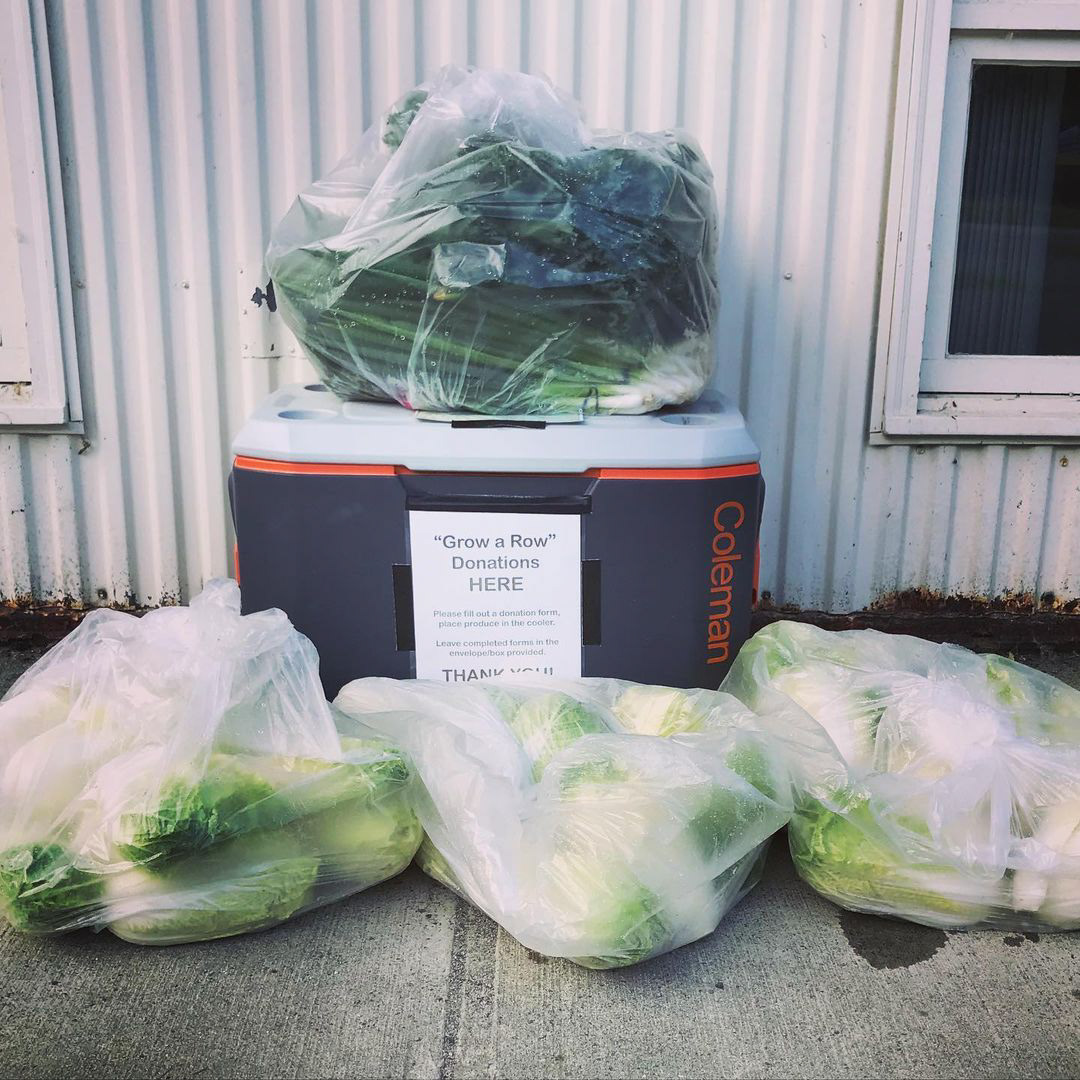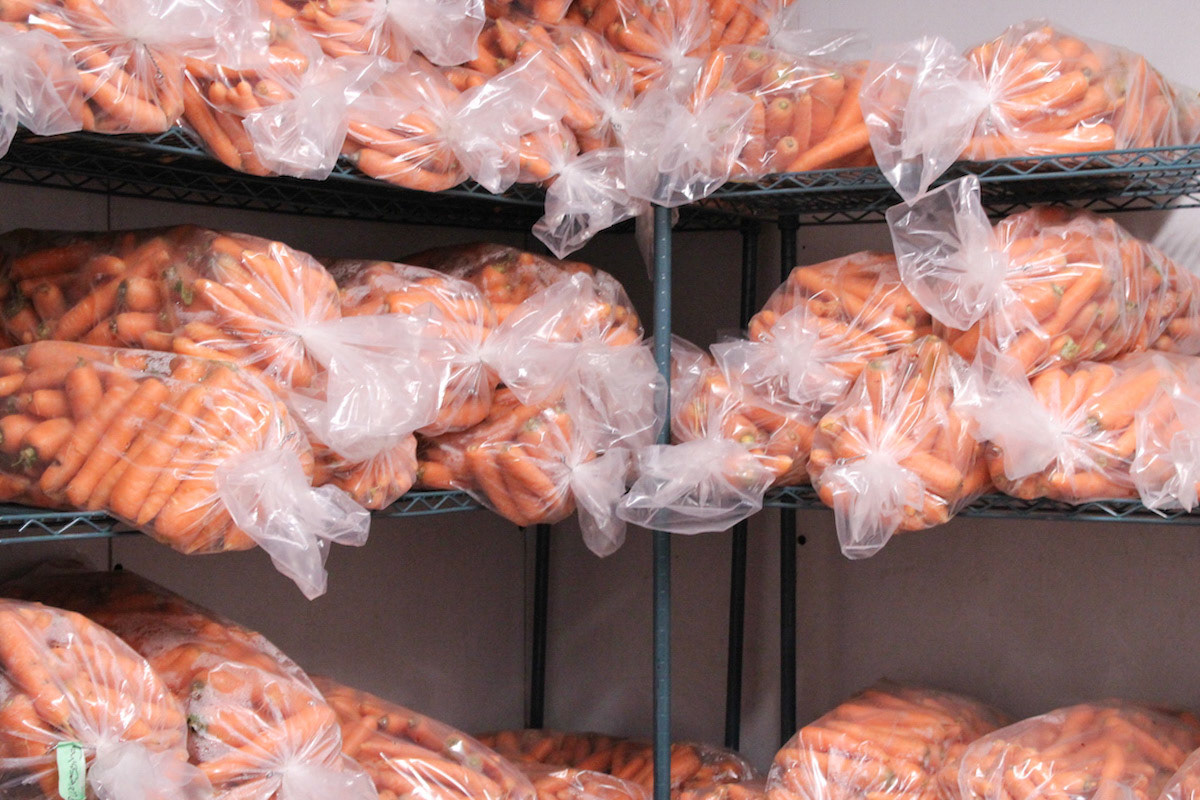By Kat Mayerovitch
Willing Hands started in 2004 with a concern about food waste. Peter Phippen, Co-op Food Store employee, saddened by the amount of fresh produce that was being thrown away, convinced management to allow him to donate it to organizations like the Upper Valley Haven. The initiative expanded from an individual one when the Upper Valley Haven agreed to become its fiscal agent, and then in 2005 Willing Hands became a nonprofit, with a Board of Directors Peter recruited and an aging donated minivan that he made deliveries in himself. Today, Willing Hands gleans left-over food from grocery stores, as well as area farms.
Food insecurity has increased massively in the face of the coronavirus pandemic; more people face periods of unemployment, underemployment, and extended periods of illness. In the past year, the number of recipient organizations that Willing Hands brings food to has increased from 65 to 80. When Willing Hands asks recipient organizations how much food is needed, the answer is consistently loud and clear: as much as we can get.
So what happens when “waste not” isn’t enough to get to “want not?”
We grow our own.

Courtesy of Willing Hands
Getting involved
The process of participating in Grow a Row is simple. Grow something edible. Plant, water, weed, repeat, until it’s ready for harvest. Then bring it by Willing Hands headquarters at 198 Church Street in Norwich. There’s a cooler out front (soon to be upgraded to a proper refrigerator, courtesy of a donation from Efficiency Vermont), where you can drop off your produce contact-free. Next to the cooler, you’ll find a form you can fill out letting Willing Hands know who you are and what you’ve donated. A staff member may give you a cheerful wave through the window.
For experienced gardeners, this may seem like a piece of cake. Just add a row to your existing garden, or dedicate one to feeding the community. But what if you’ve never gardened before, or are limited in what you can grow?
No problem, says Brian Wagner, recipient site coordinator for Willing Hands. He still feels new to gardening himself, and he went through the University of Vermont Master Gardener program, which offers three different training tracks: a self-paced course, a Home Horticulture course with weekly assignments and quizzes, and a full Master Gardener Volunteer Certification, for those who want not just to learn how to garden, but also how to share those skills with others in the community. The University of New Hampshire offers a Master Gardener program as well. If a full online class is out of reach at the moment, the UVM Master Gardener hotline offers individualized help from certified volunteers. And of course, there is always the internet for help! From formal articles to how-to videos to casual blogs, resources are out there just waiting to be shared.

Photo by Isaac Lorton
Big on dreams, short on space
There are absolutely shortcuts you can take in gardening, like buying starts from one of the many local farms that can grow through the cold rather than beginning from seed, or using purchased compost rather than making your own at home. But there will always be one constraint on gardening: access to land.
Available space can definitely impact the amount you can grow, but it doesn’t need to impact your ability. “I had nothing but containers in my backyard last year,” says Wagner, “but I definitely enjoyed the tomatoes and herbs and peppers that I was able to grow. "You can produce a lot out of a couple of raised beds, or get beautiful tomatoes out of a five-gallon bucket. I know folks who grow potatoes in an old automobile tire. There are ways to grow even if you don't have an acre."
Or, maybe your gardening home is away from home. There are formal community garden plots in White River Junction, Quechee, Woodstock, Norwich, West Lebanon, Claremont, and more. Check to see if your school or business has a bit of land that would be suitable for gardening if you request permission. (Mentioning that you’d like to grow food to donate can sometimes nudge them in the direction of “yes,” as well.)
When faced with our own limitations—we live in a townhouse with a small, shaded patio—my husband and I teamed up with a neighbor who wanted raised beds in her sunny yard. What started out as a shared dream turned into a profoundly collective endeavor, and the “Mini Farm Crew,” as we dubbed it, became one of our primary sources of comfort over the course of a long year of staying close to home.

Courtesy of Willing Hands
Starting something new
What should you grow for Willing Hands? Anything you like to eat. If you enjoy it, others will too. And that’s key—the end goal is keeping people fed. That means staples, yes, but also the foods that make staples delicious, like garlic, herbs, and peppers.
Some vegetables, like peas, beans, lettuce, and spinach, require more attention than the twice-weekly volunteers at Willing Hands can provide, so they’re better suited to being nurtured in home gardens. Recipient organizations also love long-lasting vegetables that are easy to store, like potatoes, sweet potatoes, onions, and winter squash.
Thinking more long-term? Planting perennials like asparagus, berry bushes, or even fruit trees on your property doesn’t necessarily provide much in the way of immediate benefit, but once they get started, they’ll continue to produce for years to come.

Photo by Isaac Lorton
Growing carrots … and community
In 2020, Willing Hands donated a total of 950,000 pounds of food from grocery stores, farms, organizations, and individuals, which can make it feel like your handful of leeks isn’t all that important in the grand scheme of things. But, as Wagner shares, it’s also about so much more than the amount of food you, as an individual, can produce.
“It’s not huge production," he explains, "but it’s still community committed to helping provide access to nutritious food for their neighbors. It warms my heart to see the sharing. The core of what makes Grow a Row a significant part of Willing Hands is that it enables that participation from the community that the wider program doesn’t extend to.”
Perhaps in the future we’ll see more funding and infrastructure for community gardening. It would be wonderful to see businesses, organizations, and local governments thinking about how to integrate volunteer-led gardens into how they serve the community. One day, gardens grown by and for our neighbors may be the norm across the yards and storefronts of the Upper Valley.
But this starts, as things do, with a seed.
Learn more about the Willing Hands Grow a Row program here.
Kat Mayerovitch writes, bakes, and gardens in Wilder, Vermont.
